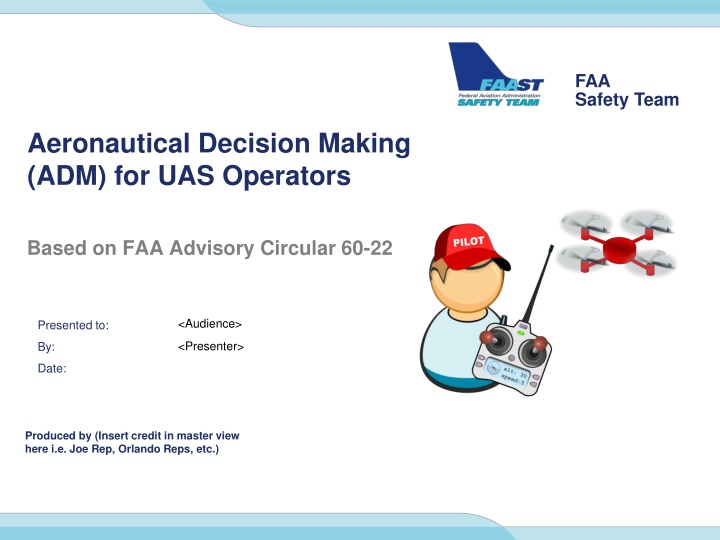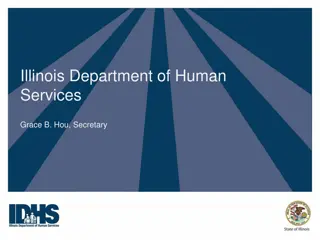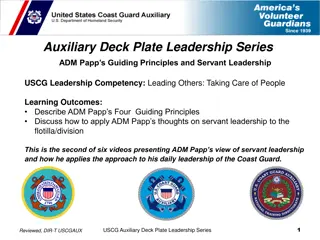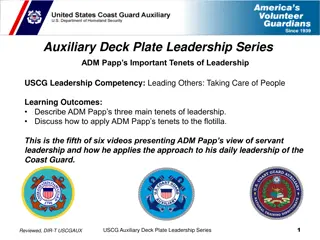
Aeronautical Decision Making (ADM) for UAS Operators: Key Points and Pitfalls
Explore how FAA Advisory Circular 60-22 guides UAS operators in applying Aeronautical Decision Making (ADM) principles to enhance safety. Gain insights into identifying operational pitfalls, hazardous attitudes, and mitigating risks in UAS operations.
Download Presentation

Please find below an Image/Link to download the presentation.
The content on the website is provided AS IS for your information and personal use only. It may not be sold, licensed, or shared on other websites without obtaining consent from the author. If you encounter any issues during the download, it is possible that the publisher has removed the file from their server.
You are allowed to download the files provided on this website for personal or commercial use, subject to the condition that they are used lawfully. All files are the property of their respective owners.
The content on the website is provided AS IS for your information and personal use only. It may not be sold, licensed, or shared on other websites without obtaining consent from the author.
E N D
Presentation Transcript
FAA Safety Team Aeronautical Decision Making (ADM) for UAS Operators Based on FAA Advisory Circular 60-22 <Audience> Presented to: <Presenter> By: Date: Produced by (Insert credit in master view here i.e. Joe Rep, Orlando Reps, etc.)
Does AC 60-22 Aeronautical Decision Making (ADM) apply to UAS? If so, what are some key points for UAS? What is ADM? A systematic approach to the mental process used by pilots to consistently determine the best course of action in response to a given set of circumstances Conventional decision making process Empirical research shows that pilots who received ADM training made 10-50% fewer errors than those with no ADM training 2 FAA Safety Team
Aeronautical Decision-Making (ADM) for UAS Same ADM principles apply to UAS pilots because it s a process and a systems approach to decision- making Identify and discuss UAS operational pitfalls UAS has some unique operational risks but many pitfalls are same as manned aviation Identify and discuss hazardous attitudes Take an Hazardous Attitude Inventory (see Chapter 2) Discuss how to recognize them ADM process 3 FAA Safety Team
So what? Research shows that problems typically arise when hazardous attitudes and operational pitfalls persist I know an entire department that can use this training... UAS pilots (and their leadership) can learn to recognize these attitudes and pitfalls in order to take corrective action before a (costly?) mishap occurs 4 FAA Safety Team
Suggested Discussion Topics: How do these contribute to UAS occurrences, incidents or accidents? What role does peer, leadership, or customer pressure play on your decision to fly or do that maneuver? Are you uncomfortable doing it? Why? Is there another way that works (more) safely and still gets the job done? What technological issues might commonly arise with current UAS technology? What role does an anti-authority or infallibility attitude play in ADM? What s the antidote to that thinking? What abnormal scenarios are you likely to encounter when you fly your typical mission sets with your drone? 5 FAA Safety Team
Stress and ADM How does stress effect ADM? When might a drone pilot encounter stress before, during, and after a flight? What might cause that stress? Is any of this predictable and preventable? How? Identify and discuss some examples of how stress might negatively affect a flight? How might stress assessment tools be used by leadership before flight to mitigate risk during flight? How do we cope with stress? How might our coping mechanisms affect the safe outcome of a flight? Can CRM* help reduce stress? Boss/Customer Have you mentally rehearsed ahead of time how you might respond to this fellow? *crew resource management 6 FAA Safety Team
ADM for Drone Operators How often is a decision made to fly or operate in a certain manner made on impulse and not pre-planned or discussed before flight? Can any of these situations be anticipated and mitigated? ops over people, Tactical BVLOS, a flyaway, weather, or a geofence issue? What would be a good response to them? Can pre-planned and rehearsed responses (checklists, handbooks) to different scenarios reduce reaction time and improve the quality of the response to unplanned events? How? FAA Safety Team
The Solution: Use the ADM process. It works! Identify or anticipate common pitfalls and hazards Develop countermeasures to avoid or minimize them Employ a margin of safety on top of your countermeasures for the unexpected Get ADM process buy in from peers and leadership Rehearse (mentally and physically) Discuss how to manage risks Discuss the DECIDE model Capt Sully Sullenberger 8 FAA Safety Team






















